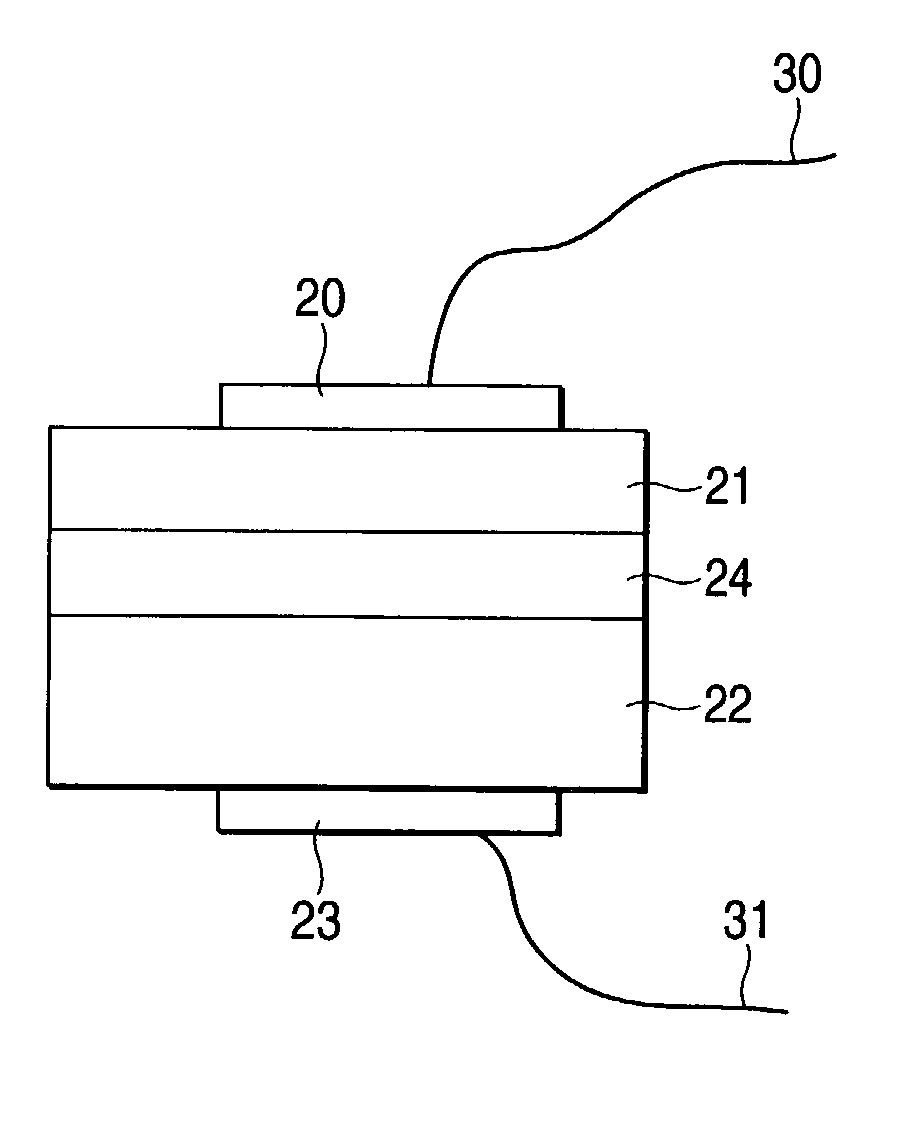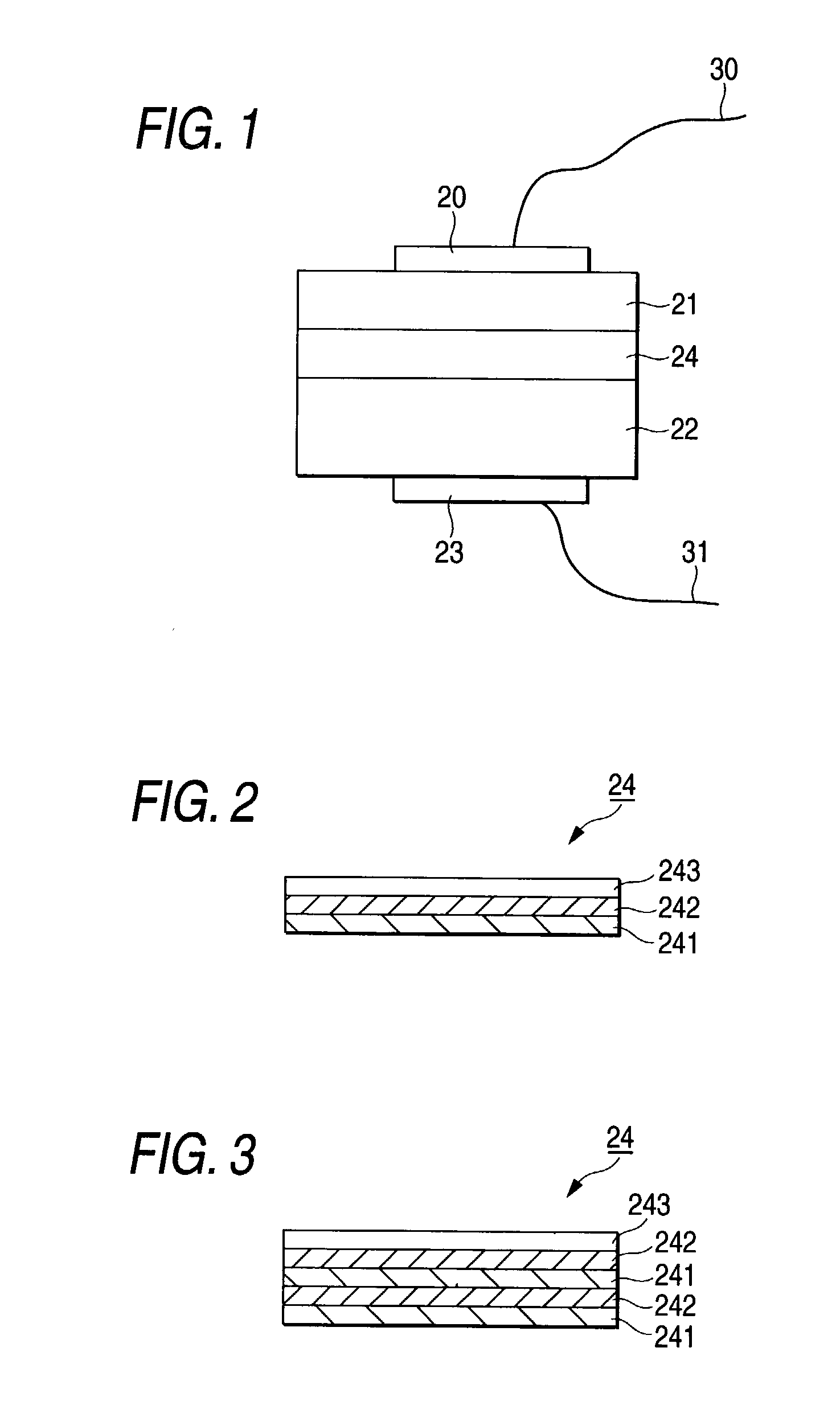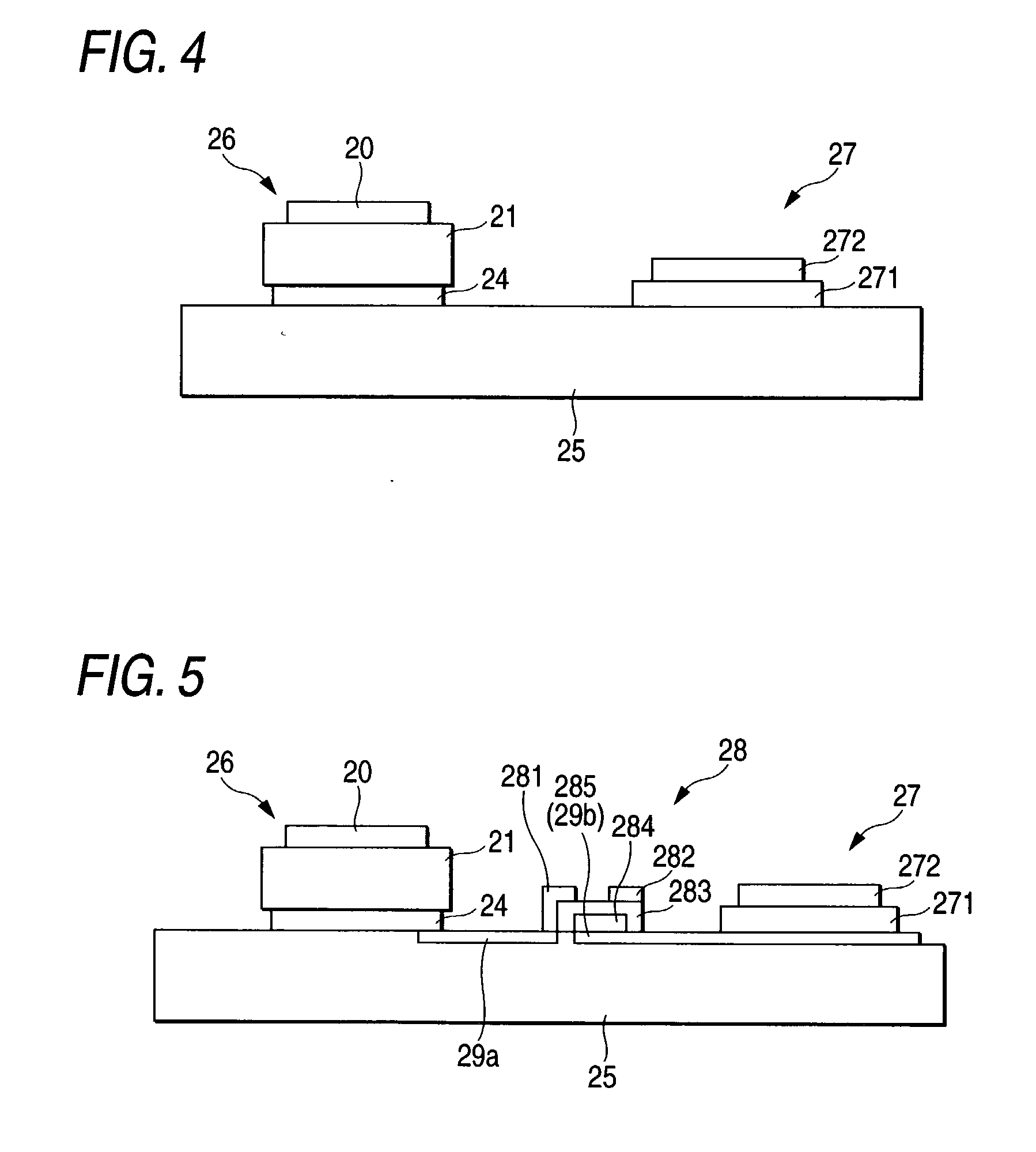Semiconductor light emission element, semiconductor composite element and process for producing semiconductor light emission element
a technology of semiconductor light emission element and semiconductor composite element, which is applied in the direction of semiconductor devices, basic electric elements, electrical apparatus, etc., can solve the problems of accelerating junction defects, inability to grow crystals of high quality, and inability to emit ligh
- Summary
- Abstract
- Description
- Claims
- Application Information
AI Technical Summary
Problems solved by technology
Method used
Image
Examples
example 1
[0089] Formation of Light Emission Layer
[0090] Au is vapor-deposited to a thickness of 0.1 .mu.m to provide an ohmic contact electrode on one surface of a p-type silicon substrate (thickness: 350 .mu.m) having a resistivity of 2 .OMEGA.cm and a plane direction (100), which has been etched with a hydrofluoric acid aqueous solution having a concentration of 10% by weight. The silicon substrate is put on the substrate holder 3 of the layer formation apparatus shown in FIG. 6 in such a manner that the surface opposite to the surface having the electrode thus vapor-deposited faces the gas inlet tubes, and after evacuating the interior of the vessel 1 to vacuum through the exhaust opening 2, the substrate is heated to 300.degree. C. with the heater 4. An N.sub.2 gas is introduced to the quartz tube 5 having a diameter of 25 mm at 2,000 sccm through the gas inlet tube 9, and discharge is carried out through the microwave waveguide tube 8 with a microwave output of 2.45 GHz set at 250 W und...
example 2
[0098] Formation of Light Emission Layer
[0099] The same substrate as in Example 1 is used. Film formation is carried out for 10 minutes under such conditions that hydrogen-diluted silane is introduced at 0.1% by atom from the gas inlet tube 12 to form a GaN:H film (hydrogenated GaN film) doped with a slight amount of Si having a thickness of 100 nm, which is used as a light emission layer, directly on the surface of the silicon substrate.
[0100] Formation of Nitride Semiconductor Layer Contributing to Charge Injection
[0101] Hydrogen-diluted silane is introduced at 1% by atom through the gas inlet tube 12, and under that condition, film formation is carried out for 10 minutes to form an n-type Si-doped GaN:H film (hydrogenated GaN film) having a thickness of 0.1 .mu.m, which is used as the nitride semiconductor layer contributing to charge injection, on the light emission layer.
[0102] The hydrogen composition of the n-type Si-doped GaN:H film measured by HFS (hydrogen forward scatteri...
example 3
[0105] Formation of Light Emission Layer (Fluorescent Inorganic Compound)
[0106] The same substrate as in Example 1 is used. Film formation is carried out for 10 minutes under the conditions of only the trimethyl gallium gas and the nitrogen remote plasma and in a state that the substrate temperature is a room temperature in Example 1 to form a film containing a fluorescent inorganic compound having a thickness of 10 nm, which is used as a light emission layer, directly on the surface of the silicon substrate. The film containing the fluorescent inorganic compound contains about 30% by atom of oxygen and about 10% by atom of carbon, as well as Ga and nitrogen.
[0107] A film formed under the same conditions on the same substrate as in Example 1 for 1 hour is taken out into the air and then irradiated with an ultraviolet ray having a wavelength of 325 nm from a He--Cd laser. The film exhibits strong blue fluorescence.
[0108] Formation of Nitride Semiconductor Layer contributing to Charge...
PUM
 Login to View More
Login to View More Abstract
Description
Claims
Application Information
 Login to View More
Login to View More - R&D
- Intellectual Property
- Life Sciences
- Materials
- Tech Scout
- Unparalleled Data Quality
- Higher Quality Content
- 60% Fewer Hallucinations
Browse by: Latest US Patents, China's latest patents, Technical Efficacy Thesaurus, Application Domain, Technology Topic, Popular Technical Reports.
© 2025 PatSnap. All rights reserved.Legal|Privacy policy|Modern Slavery Act Transparency Statement|Sitemap|About US| Contact US: help@patsnap.com



